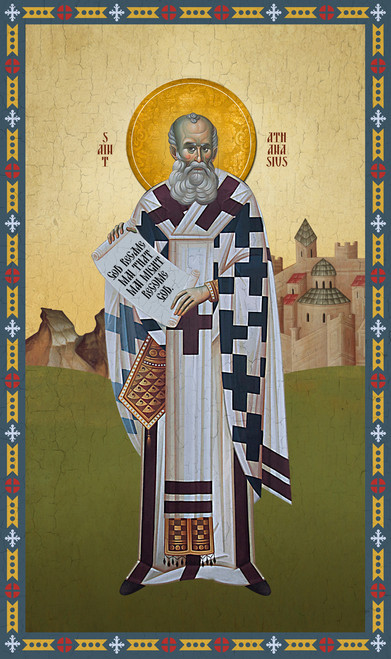Commemorated January 24/February 6 and September 25/October 8
St. Cadoc (c. 497 - c. 580) was the founder of the famous monastery of Llancarfan (c. 518) in the present-day Vale of Glamorgan in Wales. This monastery was to become one of the best-known in Wales, as well as a great centre of learning.
Two of the most popular lives of St. Cadoc were written 500 years after his repose and contain both authentic and inauthentic information. St. Cadoc was the elder son of king Gundleus (or Woolos, “the warrior”) and Queen Gwladys (Gladys; both of them later became hermits and were venerated as saints after their repose) and he was born in Monmouthshire. St. Petroc of Cornwall was a relative, and the priest and hermit Tathyw (Tathan) baptized him and instructed him in the monastic life. It was said that Cadoc had worked miracles even before his death: heavenly light miraculously appeared in his parents’ home and even food was multiplied (hence he is a patron of those suffering from famine). The future saint refused to claim the throne and decided to serve God all his life. He preached very zealously in Wales and later founded Llancarfan monastery, becoming its first abbot. He is rightly considered to be one of the founding fathers of monasticism in south Wales. The name "Llancarfan" from Welsh means "a deer church." Tradition tells us that two tame deer, harnessed to a carriage, helped St. Cadoc build the monastery.
Some early sources say that about 1,000 monks lived in the Llancarfan Monastery at the same time. Llancarfan also had several small daughter monasteries and cells (sketes). St. Cadoc also established a seminary in his monastery which was to produce many holy men. The soil of this part of south Wales, before the arrival of St. Cadoc, was very marshy and barren. The saint and his disciples drained the marshes and cultivated the land so energetically that it soon became fertile land. Thanks to the unbelievable labors of the ascetic Cadoc and his monks, which took many years, this formerly uninhabitable region turned into one of the most beautiful and prosperous corners of south Wales. Apart from the church, the monastic buildings and the seminary, the monastery also had its own hospital.
According to tradition, the future St. Iltut, who later was to found another great monastic centre at Llantwit-Major, began his monastic life at Llancarfan under St. Cadoc. At the invitation of St. Cadoc, Gildas the Wise once came to this monastery. St. Gildas remained there for a year, taught in the seminary and even compiled a copy of the Gospels, which was kept in the monastery church for a long time. The Welsh people loved this Gospel so much that they used to take oaths on it. Llancarfan Monastery was also noted for the tradition of serving the needy.
Once a band of robbers was approaching the community. St. Cadoc with his brother monks, relying on God, went out singing church hymns in very loud voices: the robbers were immediately ashamed and turned back.
It is also recorded that St. Cadoc lived as a hermit on the island of Flatholm in the Bristol Channel, while his friend, St. Gildas, lived as a hermit on another small island nearby, called Steepholm, which is now in Somerset. The friends and hermits met from time to time to pray together.
During his life St. Cadoc studied for some time in Ireland and visited many Irish monasteries, and in about the year 562 he probably made a pilgrimage to the Holy Land and Rome. From Jerusalem he brought back to his monastery several altar stones which had touched the Holy Sepulcher. Later St. Cadoc (perhaps together with St. Gildas) led a solitary life on an island off the coast of Brittany, not far from Vannes. It should be mentioned that a great many Welsh and Cornish saints moved to live in and evangelize Brittany while a considerable number of Bretons came to lead the ascetic life in Wales. These two lands were very closely linked spiritually. In Brittany St. Cadoc was a very active missionary, and there he may have founded a chapel and a monastery.







